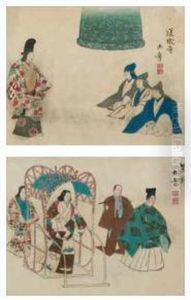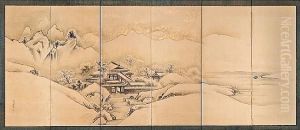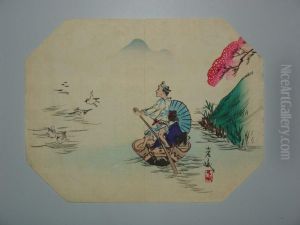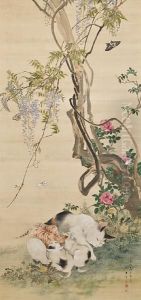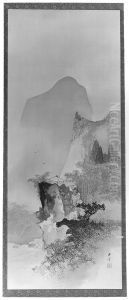Kawabata Gyokusho Paintings
Kawabata Gyokusho was a prominent Japanese painter and art educator who played a significant role in the development of modern Japanese painting during the Meiji era. Born in 1842 in the Saga Domain, now part of modern-day Saga Prefecture, Gyokusho grew up in a period of profound transformation in Japan, as the country was opening up to the West after centuries of isolation under the Tokugawa shogunate. He initially trained in the traditional Kano school of painting, which had been the dominant style of painting for centuries in Japan, focusing on Chinese-inspired themes and techniques.
However, Gyokusho's artistic journey took a significant turn with the Meiji Restoration in 1868, which marked the beginning of Japan's rapid modernization and westernization. Embracing the new era, Gyokusho became one of the pioneers in integrating Western painting techniques with traditional Japanese styles. This innovative approach not only distinguished his work but also contributed to the broader Meiji government's efforts to modernize Japanese arts.
In 1889, Gyokusho played a pivotal role in the establishment of the Tokyo Bijutsu Gakko (Tokyo School of Fine Arts), which later evolved into the Tokyo University of the Arts. As an educator, he influenced a generation of Japanese artists, teaching both traditional Japanese and Western painting techniques. His dedication to art education was instrumental in nurturing the talents of future artists who would continue to shape the trajectory of Japanese art.
Throughout his career, Gyokusho was known for his exquisite landscapes and bird-and-flower paintings, a genre known as kacho-e in Japanese. His works are characterized by a delicate balance between realism and stylization, blending the detailed observation of nature inherent in Western art with the expressive simplicity found in traditional Japanese aesthetics. Gyokusho's contributions to the art world were recognized by the Japanese government, and he was honored with awards and titles, including being appointed to the prestigious Japan Art Academy.
Kawabata Gyokusho's legacy is not only in his artworks but also in his impact on art education and the cultural bridge he helped construct between Japan and the West. His death in 1913 marked the end of an era, but his influence persists, echoing through the generations of artists he taught and inspired. Today, his works are celebrated in major museums and collections both in Japan and internationally, serving as a testament to his pioneering spirit and his role in shaping the modern Japanese art scene.

